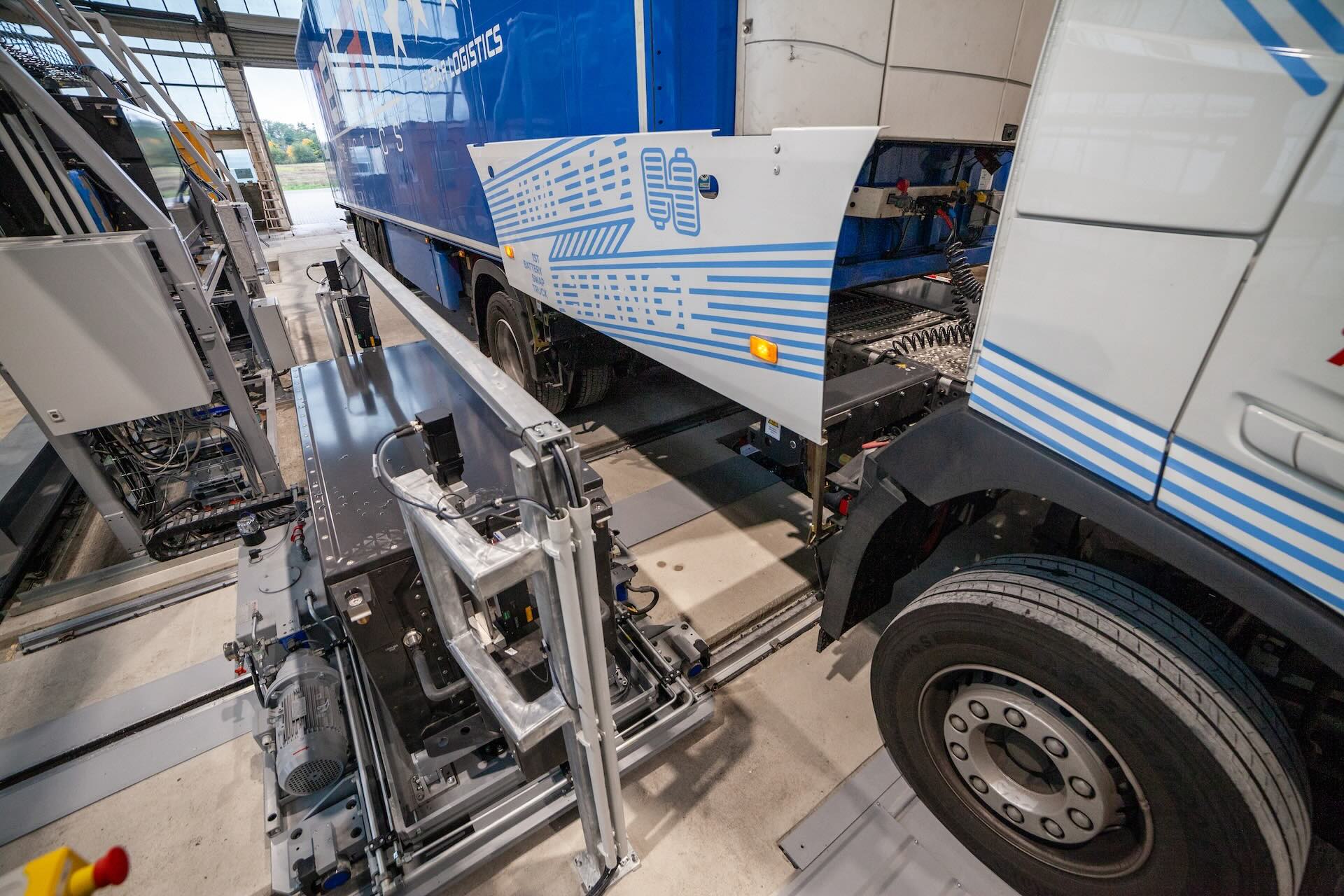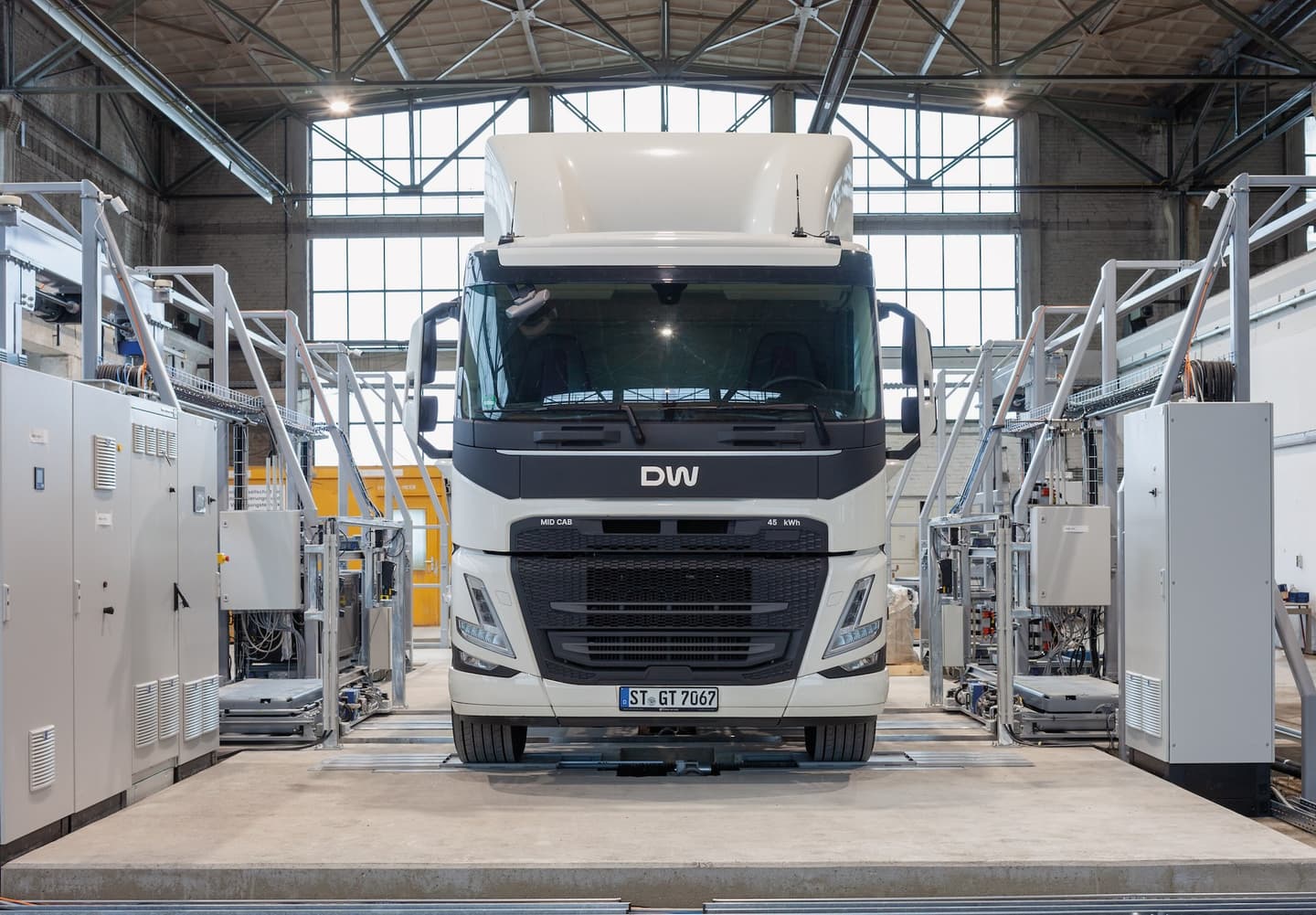The electrification of passenger cars has been on the rise for years. In 2022, 31% of all new registrations in Germany were at least partially electrically powered vehicles1. However, freight transport on the road is lagging behind. In 2023, the share of electrically powered trucks was at 0.05%2.
Yet, the electrification of freight transport is a key factor in achieving climate targets, as about 74% of German freight transport takes place on the road3.
The project eHaul, funded by the Federal Ministry for Economic Affairs and Energy, aims to implement and test a novel concept for charging electrically operated trucks. This article introduces the project in general and the role of urban energy in charging optimization.
The Challenges of Electrifying Trucks
The electrification of trucks poses a particular challenge compared to the electrification of passenger cars. A crucial factor is the weight and size of trucks used in freight transport. The batteries required for electromobility are often bulky and heavy. This means that batteries for electrically operated trucks need to have significantly higher capacity to ensure the necessary range and performance. Although current technological developments in the battery sector aim to increase energy density and reduce weight, the requirements for those batteries are significantly higher due to the size and payload demand.
Another problem is the infrastructure for charging trucks. Unlike passenger cars, which can often be charged overnight at home, trucks need to be charged during their limited rest periods or breaks. Creating powerful and widespread charging infrastructures poses a logistical and financial challenge, as they need to be installed not only at rest stops but also at the locations where goods are loaded and unloaded. As a result, the electrification of road freight transport is a complex task that brings a multitude of technical, economic, and logistical challenges.
Optimization Problems in the Energy Industry
In the projects we carry out at urban energy, we regularly encounter challenges that can be solved through optimization problems. Optimization problems typically aim to use resources efficiently or minimize costs. Simple optimization problems can be solved in a relatively short time. However, the energy industry often involves a wide variety of heterogeneous variables, constraints, and objective functions, all of which must be considered together.
Technically, optimization problems are solved using mathematical models and solution algorithms, known as solvers. These tools enable various scenarios to be played out and predictions to be made about how certain decisions affect overall efficiency and costs.
Optimization problems are applied in numerous areas of the energy industry. These include the planning and operation of power grids, the integration of renewable energies, the optimization of energy flows in smart grids, load control for peak shaving, and the planning of maintenance work. Each of these problems requires a tailor-made solution that considers the unique challenges and objectives of the respective system. A broad understanding of the existing conditions must first be acquired, which can then be translated into a mathematical model.
Our practice shows that the ability to effectively solve optimization problems will be crucial in the future for ensuring reliable, cost-efficient, and environmentally friendly energy supply.
The eHaul Project
The research project eHaul focuses on the electrification of long-distance freight transport using electrically powered trucks. By developing a fully automatic battery exchange concept and investigating the possibility of integrating grid services, a proof-of-concept for electric long-haul transport is to be created. The high utilization of the exchange stations, technical maturity, and economic scale effects make the concept technically market-ready and economically viable, setting it apart from other current solutions in long-haul road freight transport. The project is carried out by a consortium of industry and research institutions, including urban energy. The exchange station was officially opened and put into operation in November 20234.
Since April 2023, two trucks have already been tested in real operation. The trucks regularly drive to the exchange station near Berlin to change their batteries. During this process, the freight forwarders can specify with what charge level they approach the exchange station and how much energy they need in the battery.
As an expert in optimization problems in the energy industry, urban energy has, among other tasks, the role of optimizing the charging processes of the batteries to minimize the costs of operating the exchange stations and facilitate integration into the power grid. For this purpose, we developed the Charge Planner within the framework of the eHaul project, an intelligent planning tool that optimizes the charging processes of the batteries in the exchange station.

The Charge Planner - Why Actually?
Why is it actually necessary to perform optimization for planning the charging processes? Theoretically, it would be conceivable to charge the batteries as soon as they arrive at the exchange station with their maximum available charging power. This would ensure that the batteries are as fully charged as technically possible at any given time.
Two main problems ensure that this theoretically conceivable approach is not used in practice in the eHaul project:
- Preserving the Batteries
Due to their size and the ability to be exchanged, the batteries used are comparatively expensive to purchase, necessitating their careful treatment. To optimize the lifespan of the batteries used, the current charging power can therefore be regulated depending on factors such as the current SoC and maximum capacity. In general, it can be said that it is gentler for the batteries used if they are charged with as low a charging power as possible. - Economic Interests of the Plant Operator
What is already clear will become more and more apparent to consumers in the coming years: electricity is not just electricity. Within a few hours, there can be significant fluctuations in the current intraday electricity prices. If the operator of an exchange station uses a dynamic electricity tariff in which he can benefit from temporarily low electricity prices, he would like to place the charging of the batteries as much as possible in times with a low electricity price. Even without dynamic electricity tariffs, there can be incentives to shift the charging of the batteries to other times. If an exchange station generates its own energy to cover part of the energy demand, it would be desirable to shift the charging of the batteries to times with as much self-generated energy as possible. It would also be conceivable to offer grid services with the help of the batteries available in the plant. These would reserve part of the available battery capacities for charging or discharging at predefined times.
For peak shaving and load peak management, it may also make sense to reduce the charging power of the batteries at certain times. More on peak shaving can be found in one of our other articles.
The Charge Planner - How Does It Work?
In addition to the already mentioned factors that advocate for reducing the charging power of the batteries at certain times, it must of course still be ensured that the batteries are charged with the desired amount of energy at the desired times. Whenever a new battery exchange is announced by a customer of the exchange station, the Charge Planner generates an optimal charging plan for all batteries currently in the exchange station or planned for the future. Factors such as the current electricity prices and the current energy demand of the exchange station can be taken into account. Even if the exchange station is currently not performing any grid services and does not operate any own energy generation plants, the Charge Planner can potentially be adapted to consider these factors.
The Charge Planner is thus able to regulate the charging power of the batteries so that the batteries are charged with the desired amount of energy at the desired times while simultaneously maximizing the lifespan of the batteries and minimizing the costs of operating the exchange station.
Footnotes
-
https://www.vda.de/de/themen/elektromobilitaet/marktentwicklung-europa-international/deutschland ↩
-
https://www.tagesschau.de/wirtschaft/mercedes-lkw-elektro-eactros600-100.html ↩
-
https://www.dlr.de/de/aktuelles/nachrichten/daten-und-fakten/gueterverkehr-in-deutschland-verkehrsmittel-im-vergleich ↩
-
https://www.ehaul.eu/post/video-ehaul-wechselstationser%C3%B6ffnung ↩



